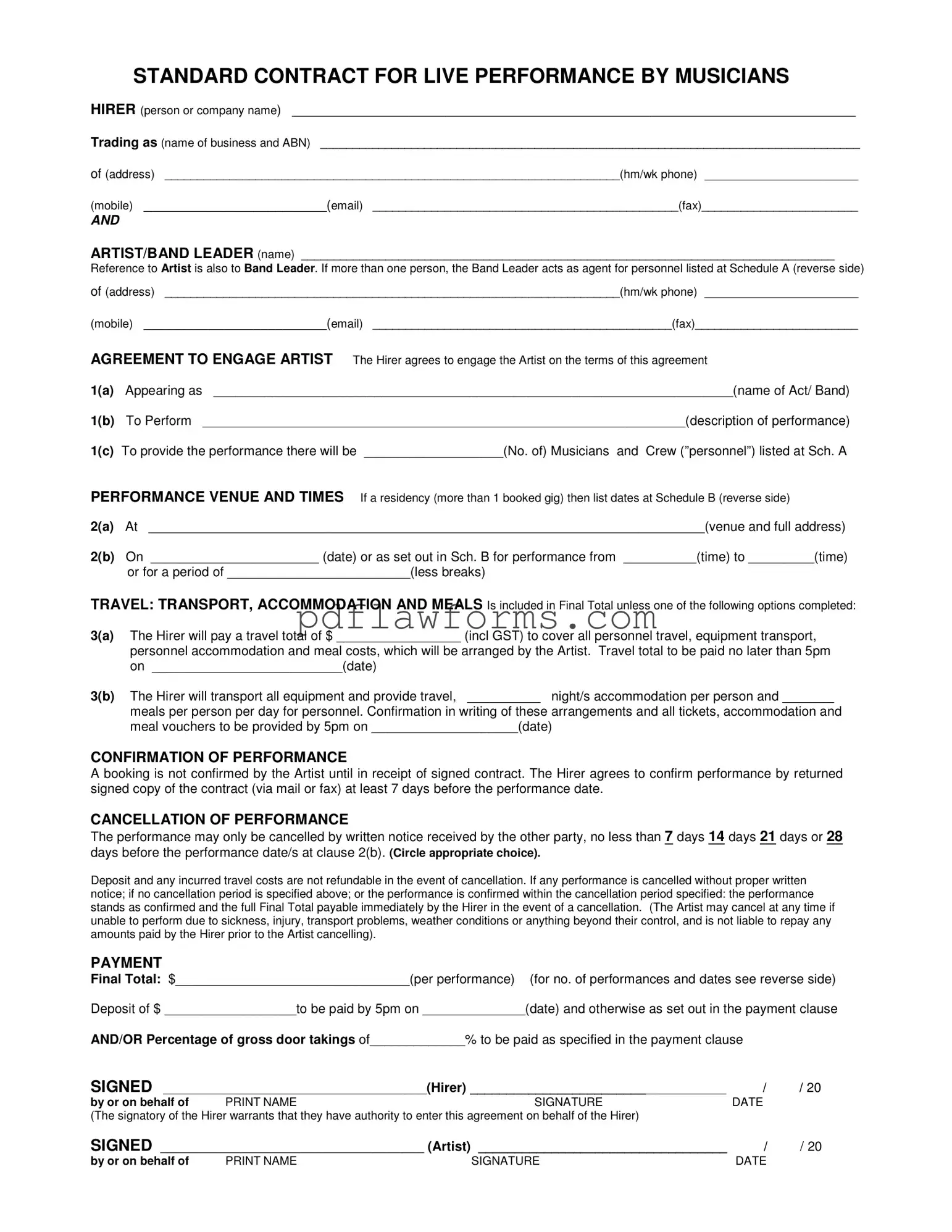Filling out the Live Performance Contract form can be a straightforward process, yet many individuals make common mistakes that can lead to misunderstandings or disputes. One frequent error is failing to provide complete contact information for both the Hirer and the Artist. Incomplete details, such as missing phone numbers or email addresses, can hinder communication and create confusion.
Another mistake involves not clearly defining the performance details. This includes omitting the name of the act or band, as well as the description of the performance. Without this information, the contract lacks clarity, and expectations may not align between the parties involved.
Many people overlook the importance of specifying the number of musicians and crew members. This information is crucial for logistical planning and ensures that both the Hirer and the Artist are on the same page regarding the size of the performance group.
When it comes to travel arrangements, errors often occur in the payment section. Some Hirers neglect to specify whether they will cover travel costs or if the Artist will be responsible. Clarity in this area is vital to avoid disputes over expenses later on.
Another common issue arises with the confirmation of performance. Some individuals fail to return a signed copy of the contract within the specified timeframe. This oversight can lead to the performance not being officially confirmed, resulting in potential scheduling conflicts.
Cancellation policies are often misunderstood. Some Hirers may not circle the appropriate cancellation notice period, leading to confusion about the terms of cancellation. It is essential to clearly indicate the chosen timeframe to avoid unexpected charges.
Payment terms are sometimes filled out incorrectly. For instance, failing to specify the deposit amount or the final total can create confusion regarding financial obligations. Ensuring that these figures are accurate and clearly stated is crucial.
Additionally, some individuals neglect to provide the necessary details regarding merchandise sales. The Artist has the right to sell merchandise during the performance, and failing to address this can lead to misunderstandings about revenue-sharing.
In the case of insurance requirements, it is important to ensure that the Hirer understands their obligations. Some may forget to indicate that they will provide the necessary insurance coverage, which can expose both parties to risks.
Lastly, many people do not review the entire contract thoroughly before signing. Skimming through the document can lead to missed details that could impact the performance. Taking the time to read and understand all sections of the contract is essential for a successful engagement.
